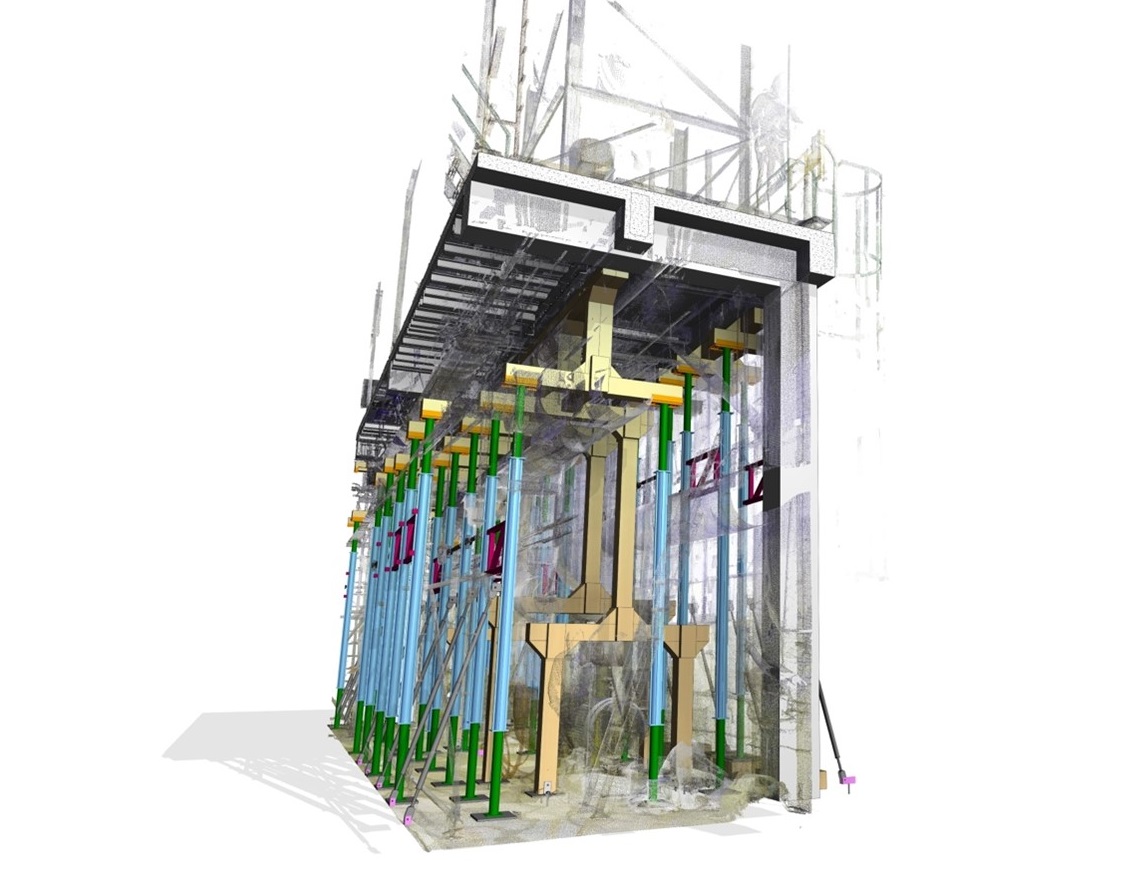In Part 1 of our series on rewarding structural engineering careers, we talked about the engineers, designers, and technicians who work in industrial processing facilities and turn ideas into new products that make advances in our modern world possible. In Part 2 of this series, we discussed industrial coking units and the unique loading challenges the drums present to the structural engineering team. In Part 3 of this series, we discussed the unique challenges of coke chutes, which receive the brunt of the impact load caused by coke unloading. In Part 4, we focused on structural analysis and collapse mitigation. In the 5th and final part of this series on rewarding structural engineering careers, we will discuss construction engineering in a chemical plant and provide an example of the complex shoring systems the structural engineers at Brindley Engineering have been challenged with.
…an example of complex shoring systems the structural engineers at BE have been challenged with.
The Essence of Constructability
Industrial facilities commonly operate 24/7/365 and the percent of time they are productive is a key to their profitability. Part 2, Part 3 and Part 4 of this series provided examples of the type of deterioration mechanisms that the structures are subjected to. When these structures need substantial repair, the repairs often must be done while the unit is still in operation, creating significant challenges for the structural engineer, not just in establishing the repair drawings, but conceptualizing how these repairs would need to be done and designing to accommodate these methods. This is the essence of constructability. Now let’s turn to the 5th and final part of this series on rewarding structural engineering careers, and the example of the complex shoring systems the structural engineers at Brindley Engineering have been challenged with.
A recent project at an indoor chemical plant in the American South was experiencing a high degree of concrete degradation in the floor slabs and support beams. To conduct the repairs, the deteriorated concrete had to be removed back to sound material so the repair concrete encapsulated the embedded rebar. This process severely weakens the item being repaired until the repair concrete and rebar are fully set. To make these repairs, a temporary shoring system was required. The repairs were wide-spread and the area very congested, requiring the use of 3D scanning technology to scan the existing structures and components to devise a construction scheme to fit around them. Shown above is an example of the 3D scan image and the recommended shoring system for the area, followed by the photo below, one of the spandrel systems used:

Choosing a Repair Methodology
Determining a methodology on how to complete a repair is a common challenge the Structural Engineers and Designers are Brindley Engineering are faced with routinely. In fact, some of the more complex structural engineering problems we face can often be related to Construction Engineering, as it uses more unique codes, temporary systems, and sequencing challenges often not found in the design of a new building or bridge.
As one can note from all five parts of these series, experience in bridge and building engineering often provides an engineer with a solid technical base in field evaluations, stress calculations, and use of the primary codes. Brindley Engineering’s team is adept at taking individuals with a more traditional building and bridge background and training them to solve the various structural challenges we face as an industry, and particularly in execution of the unique services Brindley Engineering offers our clients.
We are looking to expand our structural department. Want a rewarding structural engineering career?
- Click here to read Part 1 of this series.
- Click here to read Part 2 of this series.
- Click here to read Part 3 of this series.
- Click here to read Part 4 of this series.


0 Comments